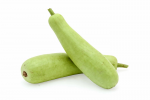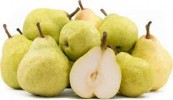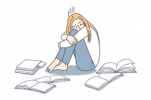An Exibitoin of ceramic Form is happening in Siddhartha Art Gallery, will be continued by 3rd september
Where the Wild Things Are
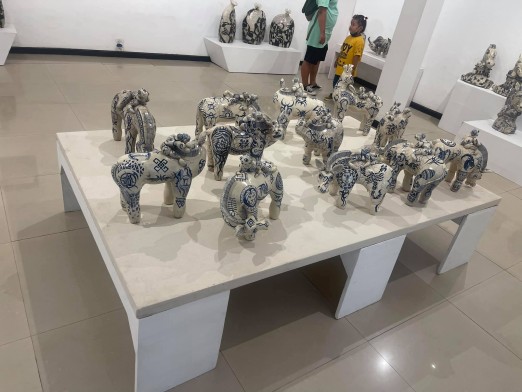
6th August, Kathmandu
The exhibition where the Wild Things Are showcases the work of master ceramic artist Gopal Das Shrestha has been commanced in Siddhartha Art Gallery since August 4th and will be continued by 3rd septemner.
In this show, his wife Yamuna Shrestha who is known for her origami creations is showing her recent ceramic creations. Their son Shushank Shrestha, a BFA graduate in Fine Art from the Kathmandu University Centre for Art and Design is also exhibiting alongside his parents with a series of beguiling and playful art works. Birds, beasts, flora and fauna and an assortment of alien characters dominate the show – hence the title.
All three artists work from the Kalapremi Studio in Baluwatar which was founded in 2006. The studio is the locus for contemporary expressions in clay and is activated with art students who make their pilgrimage to Kalapremi Studio to learn about different glazes and firing techniques. Gopal's house is the proverbial artist's studio hermetically sealed in time - packed with his own ceramic artworks , paintings and ceramic pieces that he has personally collected over the years and an assortment of ceramic works that are still in the throes of creation. His wife's origami creations are randomly displayed in one section, while his son Shushank's new ceramic works are lined up alongside his own. A host of international ceramics artists from Bangladesh, Pakistan, China, Iran, France, Denmark and USA have also made their way to Gopal's studio for the ceramic residency program that was underway prior to the pandemic.
Gopal's Kalapremi Shrestha’s recent works are a thematic continuation of his two earlier series of work Game of Chess Played by Women and his Masculism series. Once again the post modern angst of the glocal male is explored in his newest oeuvre Where the Wild Things Are. The exquisite blue and white ceramic bull sculptures from his Masculism series are now reinvented into the Cows that Want to be Bulls and in his Jenny series. Conceived in the same scale and color of his bull series, Gopal now endows his eight cows with large udders – the cows are mother figures after all. But they also sport humps like the bull, symbolizing their foray and place making in a once patriarchal world. Their humps are decorated with a tortoise shell pattern to symbolize their resilience while their decorated mythical horns are a testament to the modern woman's prowess as they pierce their way through societal, political or cultural barriers.
One cow even sports a third horn in keeping with the enlightened third eye from Hindu Buddhist texts or the unicorn from European mythology. The pattern derived from the mother board of electronic devices is used to decorate the torso of the cow to emphasize the power of the cow. One is not to be deceived by the coquettish eyelashed gaze given to these cows by the artist.
His Jenny series, is an edition of twelve works. Voluptuous women clad in bikinis, sit playfully atop donkeys. These women are not only riders but the masters of their own destiny. Gopal's donkeys grin, gape, gaze upwards and nudge the buxom female rider. The rider and the donkey appear as caricatured reflection on the politics of gender and identity. The torso of the donkey is decorated with the reoccurring motif of mother board patterns and symbols of the 12 zodiac signs : the lion, the ram, the bull, fish, scales of justice, bow and arrows etc. The traditional godhana or tattoo patterns from Kathmandu Valley plus Janakpur, Dang, Deukhuri and Kapilvastu from the Terai, are also used to embellish both his cows, horses and donkeys.
In the series Gau gau bata utha, Basti basti bata utha/ Yo desh ko muhar pherna lai utha ( Rise, rise from the Villages and Settlements / rise to change the course of the nation). Gopal pays homage to a Nepali revolutionary song written by celebrated lyricist Shyam Tamot and sung by the celebrated musical duo Ramesh and Ryan. Considered a revolutionary song even during the Panchayat regime this song was re-contextualized in the millennium and included in the Nepali film in Balidaan in 1997. The movie explored the suppression and sacrifices that lead to the civil war. The Nepali rock band Nepathya used the title of this song for one of their albums and sang this song during their peace concerts across the Nation. As the nation continues to grapple with unending political uncertainty, Gopal urges women to awake and rise up to the challenges of the times, to change the course or the face of the nation. The nine women hark back to his earlier series "Game of Chess played by Women" where they are portrayed as horses.
Once again, the artist uses the equinine form as it is associated with strength and speed and because of its association with the pawn or horse in the game of chess. Gopal calls on the mares or women from the villages and settlements:– the grass cutter, the army woman, student, doctor, nurse, dancer, sportswomen ( cricket and hockey player) to change the face of the nation and thereby change the course of their own lives too. His horse-woman are dressed in bukhus, in lehengas , blouse and skirt and dresses and the artist pays great attention to the varying details and patterns of their feminine attire. His equine female forms present an interesting visualization or commentary on female ambition, albeit in an engaging tongue and cheek way.
In another series within this exhibition, Gopal shares that women, like men, are verbally assaulted with Gaalis or scoldings that usually likens a person to an animal. In response to these universal scolding terms Gopal has created five anthropomorphic works where a female is personified as a kukurni (bitch), gadhaini (donkey), Goruni (ox), Bandarni (monkey), bheda (sheep). Gopal takes inspiration from ancient mother and fertility figures to create his these women Patterns from the motherboard make their appearance again and are in sharp contrast to the bathing costumes that these women don. The past and present and future come to play in these works. There is no doubt these scolding will increase as more and more women enter enter territories held exclusively by men.
What the artist is interestingly pointing out, is that the vilification will continue and women will need to be prepared for this scenario too. A set of three zany feminine characters are also included in this show – they fling their arms out in abandonment and seem to be in control of a greater destiny. As in the Gaali series these women are also wear bathing costumes and the patterns of the motherboard link this series to the Cows that want to be Bulls. Gopal's new works are imbued with humor and cynical innuendos as he uses anthropomorphic forms to bring important socio political issues into light, Though the artist may overwhelms that viewer with his skill, technique and versatility what is important is the empathy he has for women.
Gopal has always been deeply affected by the happenings around him- politics, war, love, motherhood, gender , migration , the earthquake and now the pandemic, which has brought the whole world to a complete standstill. His 14 black and white ceramic paintings titled Life in Black and White is reminiscent of his Earthquake and Lines of the Untold Storie series. These works portray the uncertainty of these painful times. A set of six large ceramic torso like vessels, titled Vessels Have Stories also depict this trauma and compliment the black and white raku fired paintings. A smaller series of 11 ceramic paintings The Flight of the Crows depicts the arduous life of the crow as it navigates urban spaces – while some crows soar in the sky, some meet a harrowing end, entangled in barbed wire and electric cables.
At present Gopal is busy with designing the zen garden and open air sculpture museum for the Unnati Village Development Project, Chaudhary Foundation, Nawalparasi, Chitwan, Nepal. He also curated the exhibition in Unnati Village for its gala opening in 2021. Gopal Kalapremi is Nepal's leading ceramic artist, who has transformed a traditional craft into fine art. He is member of the Nepal Artist's Society, Nepal Ceramic Association and the Funding Member of Nepal Ceramic Cooperation Society. His versatility as an artist is exemplary. He has taught at the Ceramic Training Centre of the SOS Village in Thimi, at the Bhanubhakta Memorial School and at The Chandbagh School - wherever he has taught he has become a much loved teacher and an inspiration for many young artists.
YAMUNA SHRESTHA is the wife of the artist Gopal Kalapremi Shrestha and the mother of the architect Animesh Shrestha and artist Shushank Kalapremi Shrestha. Throughout her thirty years of marriage, Yamuna has witnessed her husband's epic struggles as a breadwinner of the family and as an artist. In 2016 her son embarked on his own career with the arts. In their home which is abuzz with the arts, the quiet and ever resourceful Yamuna created her own niche teaching Art and Craft at the Chandbagh School and kept herself occupied with making intricate origami works and crafting traditional Nepali incense.
While helping her husband and son prepare their works for firing, her own desire to experiment with ceramic form seems to have manifested itself. In 2019, encouraged by her family, Yamuna finally exhibited her own ceramic works at the Siddhartha Art Gallery. The imagery that she painted on her works were inspired by Mithila nature motifs: birds, elephants and aquatic forms. Her current series in the show Where the Wild Things Are is a continuation of her earlier series and displays her ability to engage the viewer with the power of her lines and the playfulness of expression. Her blue and white works, some raku fired, compliment the thematic essence of both Gopal's and Shushank's work. However her ceramic plates with decorative floral motifs are gleaned from a distant continent, seem out of synch with the show but are indicative of the inherent potential that Yamuna is only now exploring.
SHUSHANK KALAPREMI SHRESTHA lives with his parents in a house fired up with artistic activity. This activity is led by his father and teacher Gopal Kalapremi Shrestha and his mother, Yamuna Shrestha, an art and craft teacher, who has long been fascinated with origami and giving paper form. For Shushank, the direct influence of his parents, coupled with the hustle and bustle of students and artists who visited Kalapremi Studio, led him to the arts.
Shushank graduated with a BFA from Kathmandu University in 2016. At the graduation show, his mixed media series Volitary Grotesque garnered a lot of attention. Shushank painted space ships over the Kathmandu cityscape and a host of playful alien creatures straddling the Valley’s cultural landmarks, invading farmlands, fighting over the cities of Kathmandu, Bhaktapur and Lalitpur. The artist shares that he is inspired by cartoons, animated movies and its aesthetics. These wild alien creatures continue to feature in Shushank's paintings. Even in his ceramic painting My Room which portrays the artist's private space, fantasy comes to play. The artist shares 'My room is the place where I can be the most imaginative. It is where these inanimate objects come to life and it is where a goat comes to drink beer, and where an ant and a fly come to smoke. This is where everything comes to life'. .In the artist's room the celebrated Nepali artist Manuj Babu Mishra makes a cameo appearance, as does Gopal Kalapremi Shrestha's ceramic bull and Sheelasha Rajbhandari's ant sculpture. Even the artist’s beloved zinc white furred Tibetan Apsos are portrayed in his works. His irreverent ceramic plates depict distorted hairy men, dentures and eyeballs and in one work a middle finger naughtily rises up from the plate point. These unconventional rambunctious works are an escape from the travails of the modern world and transport us to a Maurice Sendak like world, dominated by playful and strange beings.
While some of Shushank's quirky creatures subconsciously take reference from traditional forms, they interestingly metamorphose into unique creatures or characters. His new body of work is replete with his own playful and humorous anthropomorphic ceramic species: one eyed creatures or companions inspired by Mike Wazowsk a character from animation movies Monster Inc. and Brian Donelly aka Kaws an American artist and designer. His three pastel colored organic snail-like creatures with multiple gaping eyes and mouths are a curious presence in the Gallery. His “Tease” series is based on his Tibetan apsos. Shushank’s dogs now playfully merge with the mythical vahana of Bhairav and the lion. His three eyed lion dog’s grin with happiness and their toothy gaze “teases” or arrests the viewer attention. Two underglazed ceramic paintings Zinc My Dog and Zinc Lion also refer to the artist’s dogs.
The Juta series which consists of 40 ceramic shoes are "awakened" as Shushank imbues them with new life. The shoe series was inspired by the shoes that his grandfather wore. Shushank gives his ceramic shoes a new weird identity or face with three eyes, like his lion dogs. These three-eyed creatures symbolically represent their highly developed sensitivity of his creatures. With each shoe, we begin to identify new characters : Batman, the Joker , Mickey Mouse, some characters have mouths gaping open, displaying their teeth or tongue, some wear bandana masks while others have antlers and horns. A series of drawings and paintings of the Juta series, which preceded the ceramic work, is included in this show and was an earlier indicator of what was to come.
Shushank’s shoes also metamorphose into a playful regal character in the work Crowned Head I. This character sits cross legged in a meditative pose of bemusement and gazes at the audience as if the joke is on you. Like a King he wears an elaborate traditional Newa Mukut or gold crown but the figure is totally contemporary – this juxtapositions of traditional and modern, fuse the past and present in Shushank’s work This is also a technique typical of his Father’s work. Another playful Miroesque character Crowned Head II who could well be the Queen, gazes at the audience with multiple eyes – she has her hands on her hips and her presence compliments Crowned Head I . The colors, glazes and luster that Shushank has achieved from melting pure silver and 24 carat gold is unprecedented. These experiments with luster glazes are also carried on to a series of cups, some imbued with multiple eyes in the series Cups That Can See Me
In his work titled Unorthodox Disposition, Shushank takes reference from a pen and ink work Mask of Bhairab by the late paubha artist Gyankar Bajracharya, which is in Gopal Kalapremi's private collection. In his interpretation of the work, Shushank creates a detailed drawing imbued with his own imaginary creatures. In his painting Where the Wild things Are II, Shushank’s alien characters from his Volitary Grotesque exhibition in 2016, make a cameo appearance and frolic with his newest species.
It would be interesting for Shushank to scale up the size of creatures for more impact. At present, he is restricted by the size of the kilns in Nepal and the limited variety of glazes that are available. However, despite these limitations he had pushed the boundaries of ceramic expression and taken his works to a bold contemporary form. His works have the gorgeous luster - a technique that he learnt from Abas Akbari master luster artist from Iran. The pastel glazes has also made its first debut in the Teaser series
In 2015, Shushank received a grant to travel to France to study about different techniques in pottery. Two years later in 2017 he accompanied his father to the National College in Lahore Pakistan to assist him with the ceramic workshop and document the process. In 2018, he journeyed with his father to Tangshan, China to take part in a ceramic fair and to learn about the ceramic art scene in China. He has also worked with his father, training local potters in Dang, Chitwan and in creating a mural and zen garden in Unnati Cultural Village. An important project for Shushank was the workshop Making Markets Works for the Conflict Affected in Nepal. Shushank travelled to villages in Nepal to study the status and potential of ceramics and was able to observe that " although people still practice traditional approaches such as terracotta and pit firing, the quality of their products is low. The project concluded that the introduction of new techniques could help save the slowly depleting tradition while also improving its marketability. It was a crucial experience that made me realize that there is much to do in the ceramic field in Nepal and much for me to learn as well. Such encounters combined with my academic and personal background have now motivated me to pursue an MFA''. There is no doubt that these experiences carry weight in Shushank's growth as an artist. The knowledge and skill that Shushank has also learnt and inherited first hand from his Father, has placed him in a unique and advantageous position.
At present Shushank is also working on illustrating a graphic novel Bato Ghato for the American anthropologist Dr. Stacy Pigg. In the fall of 2021, Shushank will be attending Alfred University in New York, USA to pursue a Masters in Fine Art.
Share this with your friends:
प्रत्येक महिला पुरुषभन्दा कमजोर छैनन् : कमला भासिन
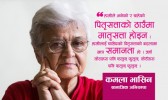 नरेश ज्ञवाली ►
भदौ २७, काठमाडौं। दक्षिण एसियामा लैङ्गिक समानता, शिक्षा, गरिबी निवारण, मानवअधिकार र शान्तिका...
नरेश ज्ञवाली ►
भदौ २७, काठमाडौं। दक्षिण एसियामा लैङ्गिक समानता, शिक्षा, गरिबी निवारण, मानवअधिकार र शान्तिका...
पुरुष कलमले पूर्ण नारीलाई लेख्न सक्दैन
 काठमाडौं। मान्छेहरू कडा भएर बोलेको भन्दा नरम भएर बोलेको मनपर्छ । खरा कुराभन्दा नरम, सरस र सलिल कुराहरू मनपर्छ । तर...
काठमाडौं। मान्छेहरू कडा भएर बोलेको भन्दा नरम भएर बोलेको मनपर्छ । खरा कुराभन्दा नरम, सरस र सलिल कुराहरू मनपर्छ । तर...
कालो तिलले कम्मर दुखेको र अनुहारमा भएको पोतोको उपचार गर्छ
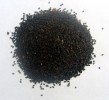 काठमाडौं । कालो तिल अथवा तिलबाट प्राप्त हुने बिऊ तेल उत्पादनको लागि प्रयोग गरिन्छ । अनुहारमा चायाँ, पोतो वा दाग,...
काठमाडौं । कालो तिल अथवा तिलबाट प्राप्त हुने बिऊ तेल उत्पादनको लागि प्रयोग गरिन्छ । अनुहारमा चायाँ, पोतो वा दाग,...
दुबईमा पहिलो पटक नेपाली कल्चरल पहिरनको फेसन शो सम्पन्न
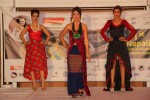 काठमाडौं। गत माघ २८ गते दुबईमा नेपाली कल्चरल पहिरनको फेसन शो पहिलो पटक फेसन फ्युजन २०१७ सम्पन्न भयो । एनआरएन...
काठमाडौं। गत माघ २८ गते दुबईमा नेपाली कल्चरल पहिरनको फेसन शो पहिलो पटक फेसन फ्युजन २०१७ सम्पन्न भयो । एनआरएन...
उमेर अनुसारको हुनुपर्छ खान्की, अनि मात्र मानिस स्वस्थ रहन्छ
 काठमाडौं। पोषणको आवश्यकता उमेरअनुसार परिवर्तन हुन्छ । उमेरको हरेक अवस्थामा स्वयंलाई स्वस्थ राख्न शरीरलाई...
काठमाडौं। पोषणको आवश्यकता उमेरअनुसार परिवर्तन हुन्छ । उमेरको हरेक अवस्थामा स्वयंलाई स्वस्थ राख्न शरीरलाई...
यी भोजन खाए छाला सुन्दर हुन्छ !
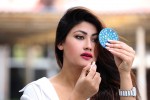 काठमाडौं। स्ट्रबेरी : यो भिटामिन सीले भरपुर हुन्छ । भिटामन सीले छालालाई चाउरीबाट जोगाएर सधैं जवान राख्न मद्दत...
काठमाडौं। स्ट्रबेरी : यो भिटामिन सीले भरपुर हुन्छ । भिटामन सीले छालालाई चाउरीबाट जोगाएर सधैं जवान राख्न मद्दत...
मुलुकका सम्मानित पदमा महिलाको उपस्थिति, सबैका लागि आशाको ढोका उघारे
 काठमाडौं। अहिले नेपालका तीनवटै अंगका प्रमुख महिला भएकाले नेपाली राजनीतिक क्षेत्रमा मात्र नभएर सामाजिक...
काठमाडौं। अहिले नेपालका तीनवटै अंगका प्रमुख महिला भएकाले नेपाली राजनीतिक क्षेत्रमा मात्र नभएर सामाजिक...
लोग्नेमान्छेको जात केटी देखेपछि.....
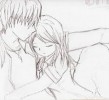 काठमाडौं । शान्ताको विवाह भएको पाँच वर्ष बितिसक्दा पनि छोराछोरी भएनन् बरु उनलाई एकाएक ब्लड क्यान्सर भयो । समयले...
काठमाडौं । शान्ताको विवाह भएको पाँच वर्ष बितिसक्दा पनि छोराछोरी भएनन् बरु उनलाई एकाएक ब्लड क्यान्सर भयो । समयले...
मनोसामाजिक समस्या के हो?
 साउन ११, काठमाडौं । मनोसामाजिक समस्या भन्नाले मन र समाज वीच हुने समस्या हो । यो जो कोही व्यक्तिलाई पनि हुन सक्छ ।...
साउन ११, काठमाडौं । मनोसामाजिक समस्या भन्नाले मन र समाज वीच हुने समस्या हो । यो जो कोही व्यक्तिलाई पनि हुन सक्छ ।...
महिलाको दोस्रो विवाहको कुरा सुन्दा पढेलेखेकैले अनुहार बिगार्छन्
 काठमाडौं। दोस्रो विवाहबारे मैले नसोचेको, नचाहेको होइन । तर, म मेरा आत्मीयसँग फेरि विवाह गर्नेबारे कुरा गर्छु,...
काठमाडौं। दोस्रो विवाहबारे मैले नसोचेको, नचाहेको होइन । तर, म मेरा आत्मीयसँग फेरि विवाह गर्नेबारे कुरा गर्छु,...



